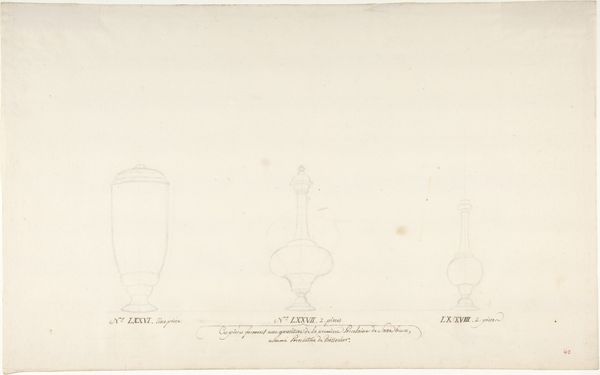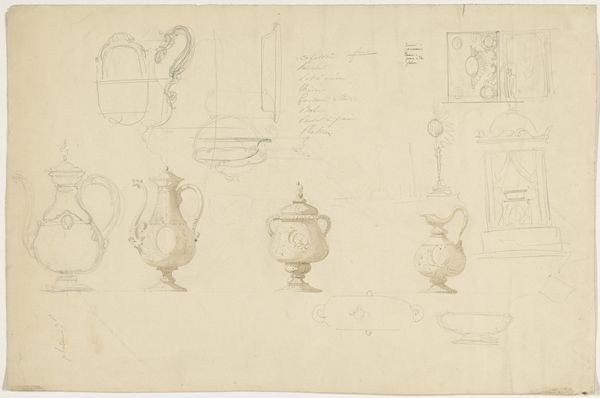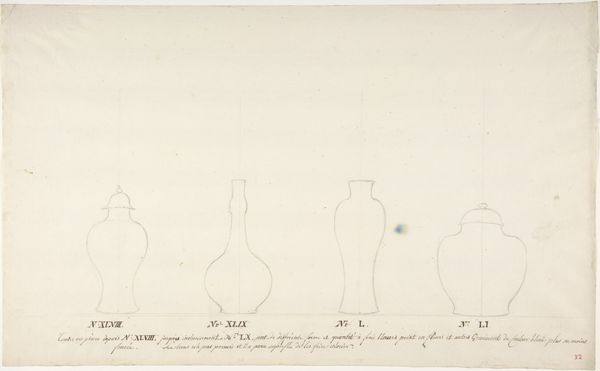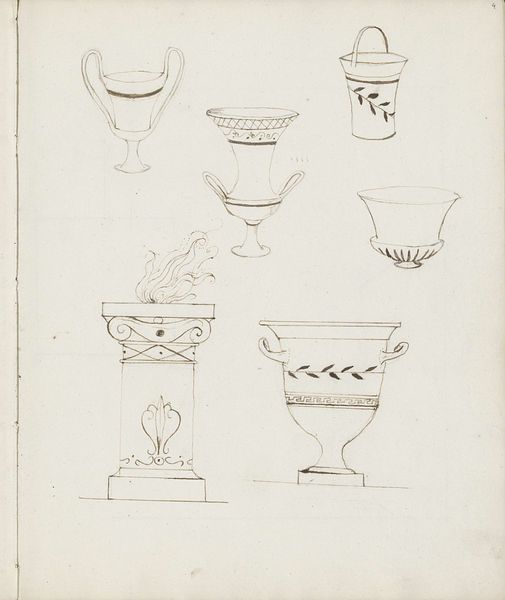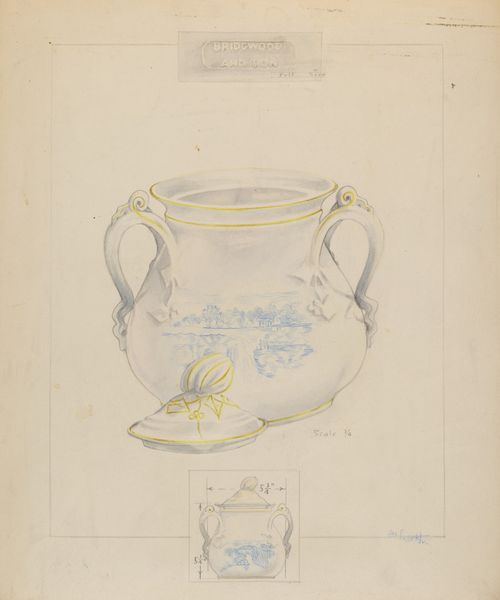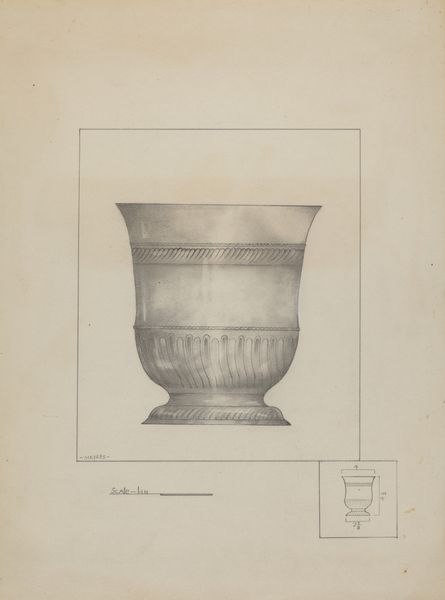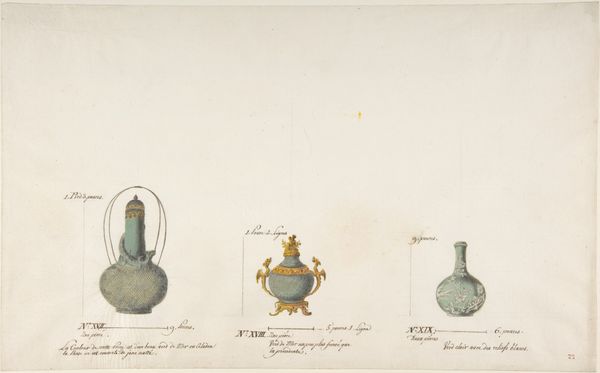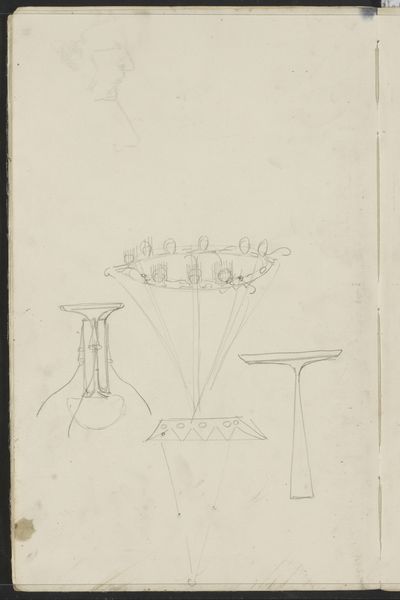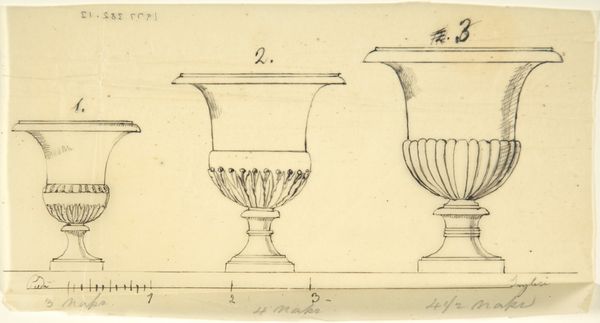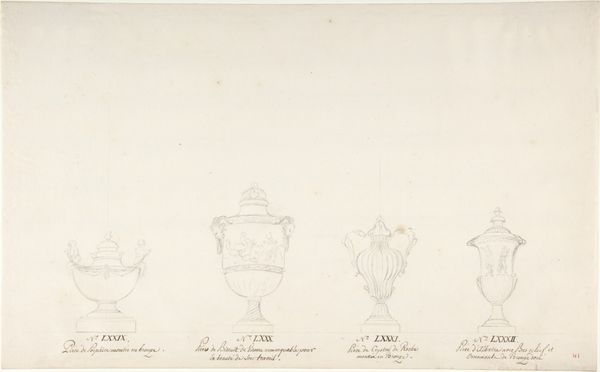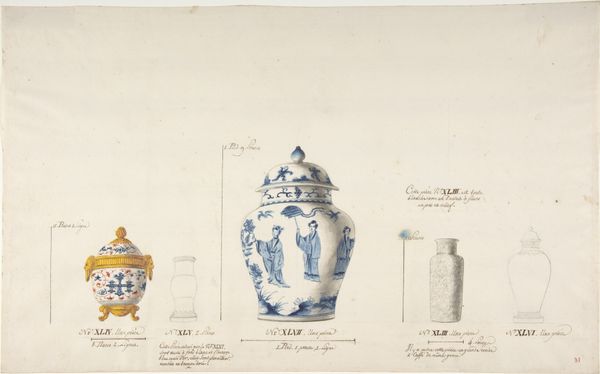
drawing, paper, pencil
#
drawing
#
paper
#
romanticism
#
pencil
Dimensions: 208 mm (height) x 266 mm (width) (bladmaal)
Curator: Here we have Martinus Rørbye's 1836 drawing, "Turkish Jugs and Vessels," a delicate still life rendered in pencil on paper. Editor: Immediately, I'm struck by its fragile beauty. There's a ghostly quality, like memories fading into the light. The drawing captures a lightness and openness on this almost blank sheet. Curator: Rørbye was a key figure in the Danish Golden Age, you know, a champion of Romanticism with a keen eye for the everyday. This piece hints at his travels, his fascination with exotic cultures. Notice how the simple pencil lines almost celebrate the forms of the vessels. Editor: Precisely. To me, that's where the real substance lies. Look closely—we see the process of depiction; the hand that created the vision. The almost scientific attention to detail, without being clinical or cold. The simple means--pencil on paper—allowing him to conjure such a sense of volume. It focuses my thoughts on production, not just aesthetic form. Curator: I see what you mean about the material, that simple gesture speaks to its depth, but for me it evokes something deeply human: nostalgia. The way we imbue objects with meaning. Think about what these objects, likely from Rørbye's own collection, would have represented: adventures abroad, whispers of distant lands. The way he sketches these “souvenirs”, gives a new weight to the very concept of making and collecting. Editor: It's a fine balance he strikes. We're seeing, really, the fetishization of these “exotic” goods. To what extent are we truly appreciating the craftsmanship, versus romanticizing an imagined "East?" That pencil, the paper—those materials have their own history, inextricably tied to colonialism. It really asks questions about the politics of seeing, don't you think? Curator: Absolutely. He captures a transient moment. You feel he wants to honor an impression instead of delivering an objective description. He gives us just enough visual information, trusting us to complete the narrative. It's an act of great intimacy and empathy in the end, almost like whispering a story rather than shouting it. Editor: That subtle rendering opens up more questions the more I look, yes. But maybe this open-endedness is Rørbye's biggest achievement. Thank you for sharing this fragile moment.
Comments
No comments
Be the first to comment and join the conversation on the ultimate creative platform.
